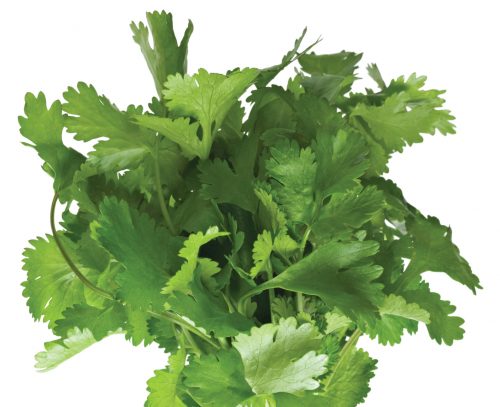
Coriander is probably one of the most contentious herbs: people either seem to love it or hate it.
Its distinctive flavour is described as fresh with citrusy overtones, although some people think it tastes soapy. Also known as cilantro and Chinese parsley, coriander is popular in Mexican and Asian dishes — Thai, Vietnamese and Indian cuisine in particular. The leaves, stems, roots and seeds are all used in cooking although the seeds have a milder, sweeter flavour than the rest.
Buying
Look for bright-green leaves and avoid browning or wilting.
Storing
Don’t wash coriander until you are ready to use it. Store it in the crisper compartment of the fridge in a plastic bag or if the roots are still attached, pop them into a glass of water. Better still, try growing your own and pick coriander directly from the plant as required. Coriander is best planted in spring in a sunny spot in the garden or pot.
Nutrition
Coriander is rich in phytochemicals which have antioxidant properties.
Using
Coriander is an attractive garnish for soups, eggs, fish curries and stir-fries.
- Combine diced kiwifruit, avocado, onion, chopped spring onion and coriander with a dash of lime juice for salsa with a twist.
- Coriander is a key flavour in Vietnamese rice paper rolls.
- For a tasty accompaniment to Asian curry dishes, mix 1 cup chopped coriander and the juice of 1 lime through cooked vermicelli rice noodles or rice.
- Swap part or all of the parsley of a tabouli salad with coriander for a zesty alternative.
- For a citrusy fresh salad dressing finely chop a handful of coriander and combine with 1 tablespoon lemon juice, 2 tablespoons olive oil and salt and pepper to taste.
- Try this recipe idea: Coriander and chicken vermicelli salad
Did you know? Coriander is believed to be one of the most ancient herbs, dating back to 1550 BC.
www.healthyfood.com










